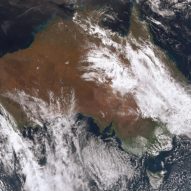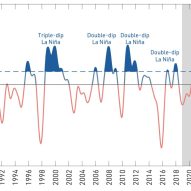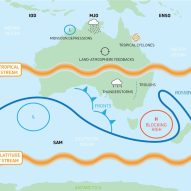 August 5, 2022 11:03 am
Published by Climate Extremes
August 5, 2022 11:03 am
Published by Climate Extremes
A spatially compounding event occurs when several impacts occur at the same time but at different locations.
 August 5, 2022 10:58 am
Published by Climate Extremes
August 5, 2022 10:58 am
Published by Climate Extremes
A temporally compounding event occurs when a series of hazards affects the same region, exacerbating the impact of any of the individual events.
 August 5, 2022 10:54 am
Published by Climate Extremes
August 5, 2022 10:54 am
Published by Climate Extremes
A preconditioned compound event occurs when the impact of a hazard is exacerbated by pre-existing conditions.
 August 4, 2022 10:27 am
Published by Climate Extremes
August 4, 2022 10:27 am
Published by Climate Extremes
We are conducting research to determine if we can forecast changes in the probability of extreme rainfall events associated with atmospheric rivers 2-6 weeks ahead.
 July 26, 2022 9:10 am
Published by Climate Extremes
July 26, 2022 9:10 am
Published by Climate Extremes
Further understanding of the role of clouds may improve the knowledge of local atmosphere-ocean interactions, aiding the forecasting of coral bleaching events.
 June 28, 2022 9:07 am
Published by Climate Extremes
June 28, 2022 9:07 am
Published by Climate Extremes
La Niña is an important cause of rainfall variability of Australia. A multi-year La Niña event can be particularly important for some climate risks. Some climate models are indicating that La Niña may continue for a third year through spring and summer 2022-23, increasing the chances of more rain and flooding.
 June 8, 2022 3:41 pm
Published by Climate Extremes
June 8, 2022 3:41 pm
Published by Climate Extremes
By bringing together researchers focussed on the large-scale modes of climate variability with researchers investigating weather and land surface processes, our goal is to improve the regional predictions of how rainfall extremes will change in the future.
 May 2, 2022 1:59 pm
Published by Climate Extremes
May 2, 2022 1:59 pm
Published by Climate Extremes
The difference in results between the high-skill and low-skill CMIP6 models highlights an urgent need to examine why some models work well and some don’t, and, ultimately, improve those with weaknesses.
 March 31, 2022 11:45 am
Published by Climate Extremes
March 31, 2022 11:45 am
Published by Climate Extremes
The ARC Centre of Excellence for Climate Extremes is working to understand marine heatwave predictability.
 March 16, 2022 11:04 am
Published by Climate Extremes
March 16, 2022 11:04 am
Published by Climate Extremes
Climate Extremes is leading research that will ultimately help businesses and governments better assess the risks posed by compound events.










